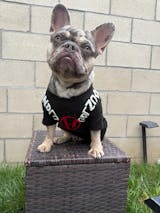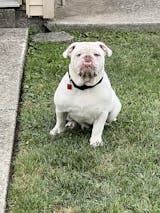How to Clean Dog Tear Stains
Curious about how to clean dog tear stains? Tears are an important part of your dog’s eye health. They provide nutrients to the eye, protect the surface of the eye, and help wash away irritants that may otherwise scratch or damage the surface. In short, they are crucial to keeping your dog healthy and
What isn’t so crucial for eye health (and can be the opposite) is the presence of those dark reddish-brown stains that appear on the fur beneath your dog’s eyes. Those are tear stains, though that brings another host of questions - What are they? Where do they come from? And how do I treat them?
If you, like us, had concerns about the presence of tear stains, we have the answers you’re looking for!

What are Tear Stains?
Tear stains are dark red, brown, or black discolored hair under one or both eyes. Many times, you’ll also see discharge on the areas, though that isn’t always the case. While it’s more obvious in lighter colored dogs, many assume it only affects them. However, it’s just as prevalent in dark-furred pups as well. Tear stains are caused by an overflow of tears from the eyes onto your dog’s face, also known as epiphora.
Epiphora isn’t (usually) a medical condition on its own but rather presents as a symptom of an underlying condition that requires some attention from your vet. Sometimes, tear stains can be simply a cosmetic issue requiring no treatment. However, there is the risk that they could be an indication of something more serious, like a corneal ulcer (trauma to the eye’s surface layer), glaucoma, or infection. The most common cause of tear stains is because something is blocking the proper eye drainage of tears through the duct system, so they overflow out of the eyes.
Unfortunately, those aren’t all the things you need to look out for! If left untreated, tear stains can cause bacteria to build-up in the fur around your dog’s eyes. This runs the risk of further infection to the skin (or in the eyes themselves).
How to Stop Watery Eyes
If your dog has developed seasonal allergies or is prone to epiphora for other health reasons, you may not be able to completely stop tear stains from happening even with medication. You can, however, treat the tear stains it causes.
Tips and Tricks for Cleaning Tear Stains
While it is possible to clean the area with a warm cloth and remove some of the build-ups and remove the risk of skin infections, that won’t remove the staining itself. Veterinary medications can be too harsh for your pet’s skin and most home remedies are not always reliable. That’s where Squishface comes in! Our specially-formulated Wrinkle Paste is designed for sensitive skin and perfect for even the most allergy-prone pet.
Here’s How You Do it:
- Clean the Affected Area
You can use a damp cloth to start the process, though we recommend using our Squishface Wrinkle Wipes to make sure the area is free of bacteria and any infectious agents. Do not use spraying water or shampoo but do be careful to keep it out of the dog’s eyes.
- Thoroughly Dry the Skin
Once you’ve cleaned any discharge or moisture from the area, take a small towel and make sure the area isn’t soaked before you apply anything else to it.
- Apply Paste
A topical paste works best for treatment in these areas. Our Squishface Wrinkle Paste works best for wrinkly dogs, however, it can be used for all dog breeds! The paste creates a water-repellent barrier to keep moisture – and the potential for bacteria or fungal growth – at bay!
- Wipe Away the Excess
You’ll only need to apply about a pea-sized amount of paste to the area under each eye. Be careful not to over-apply or get the product into your pup’s eyes. Once you’ve covered the stained area, wipe away any extra.
- Reapply Daily for 7-10 Days
The combination of natural zinc oxide and coconut oil creates a water-repellent barrier that keeps moisture, fungus, and bacteria out. That means you only have to apply the paste once every 24 hours. Continue application daily for 7-10 days OR until the tear stains disappear completely.
What Not to Do
While it can be tempting to follow viral trends of treatments touted as “all-natural” home remedies, sometimes these can make the situation worse or harm your dog’s overall health.
- The first – and most important note – is to avoid getting anything in your dog’s eyes. This can be difficult if you have a squirmy pooch that doesn’t sit still well. However, no matter what you decide to use, avoid that altogether.
- We think this goes without saying but never, ever use bleach on your dog’s fur for any kind of discoloration to the fur. You’ll potentially blind or even cause further harm to your pet.
- Avoid hydrogen peroxide.
- You should also avoid rubbing alcohol or any kind of make-up remover for the same reasons. You have to be careful using household remedies for stain removal.
For more tips, tricks, and favorite products, roll over to the Squishface Blog. Don’t forget to check back in every week for even more canine content!










